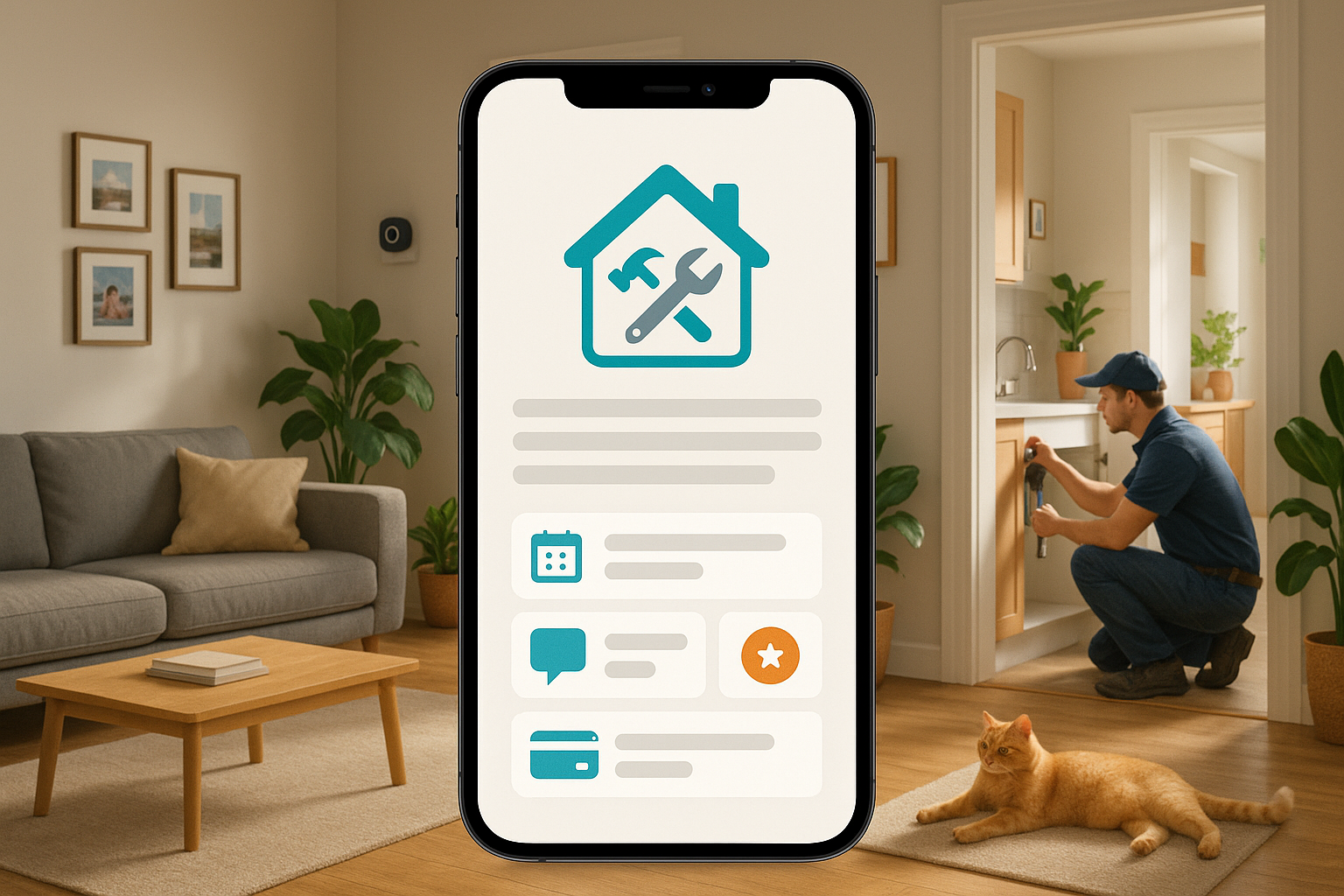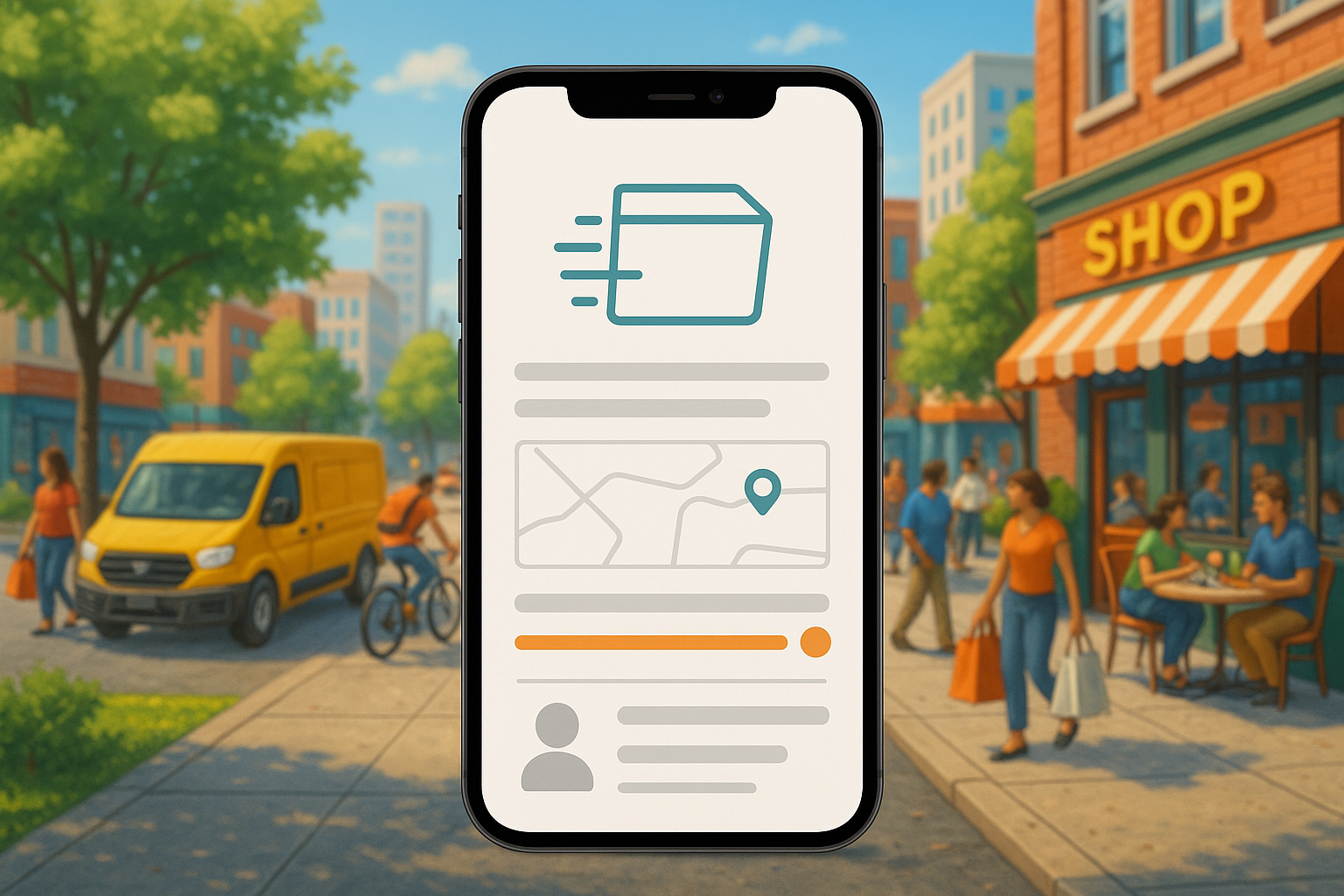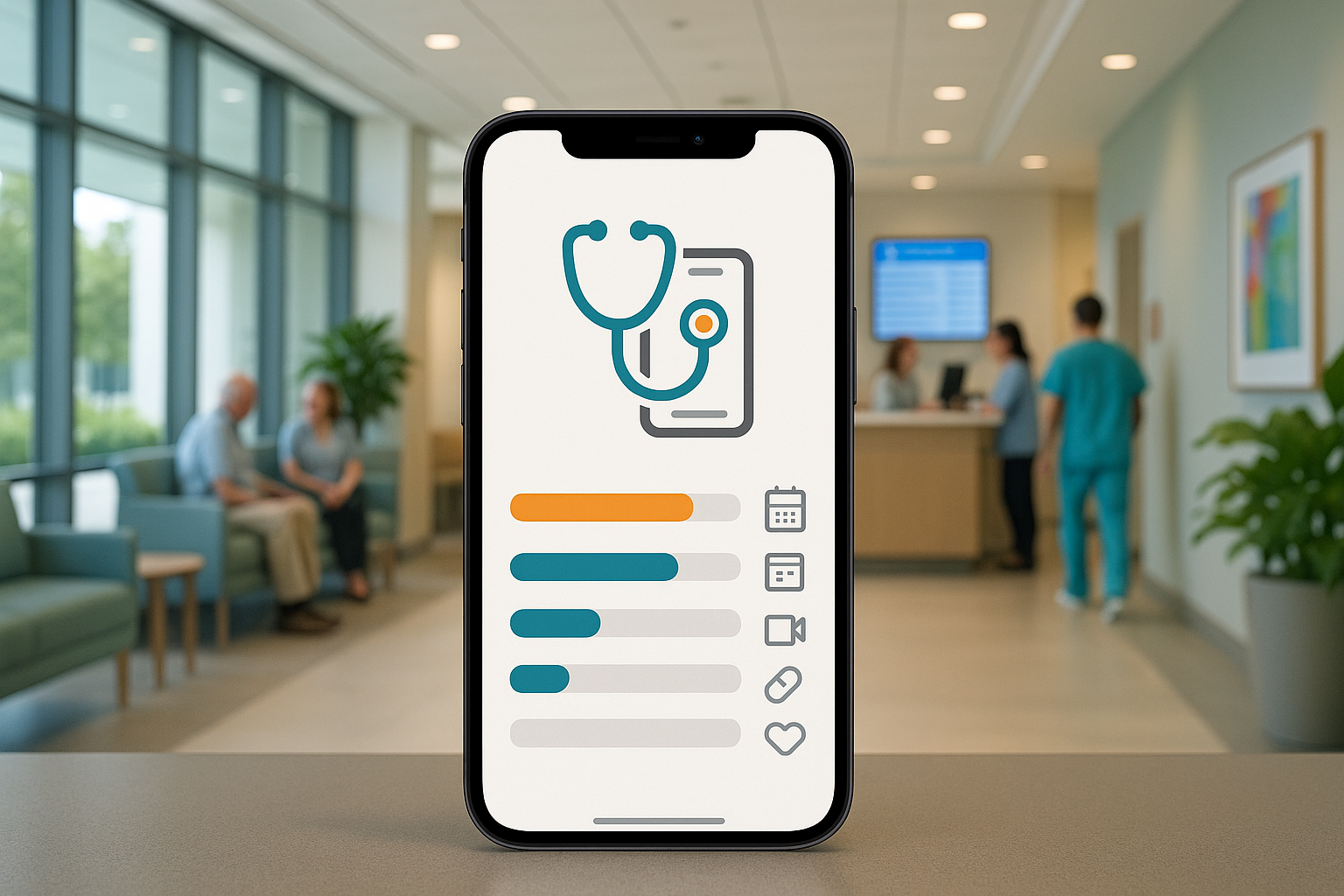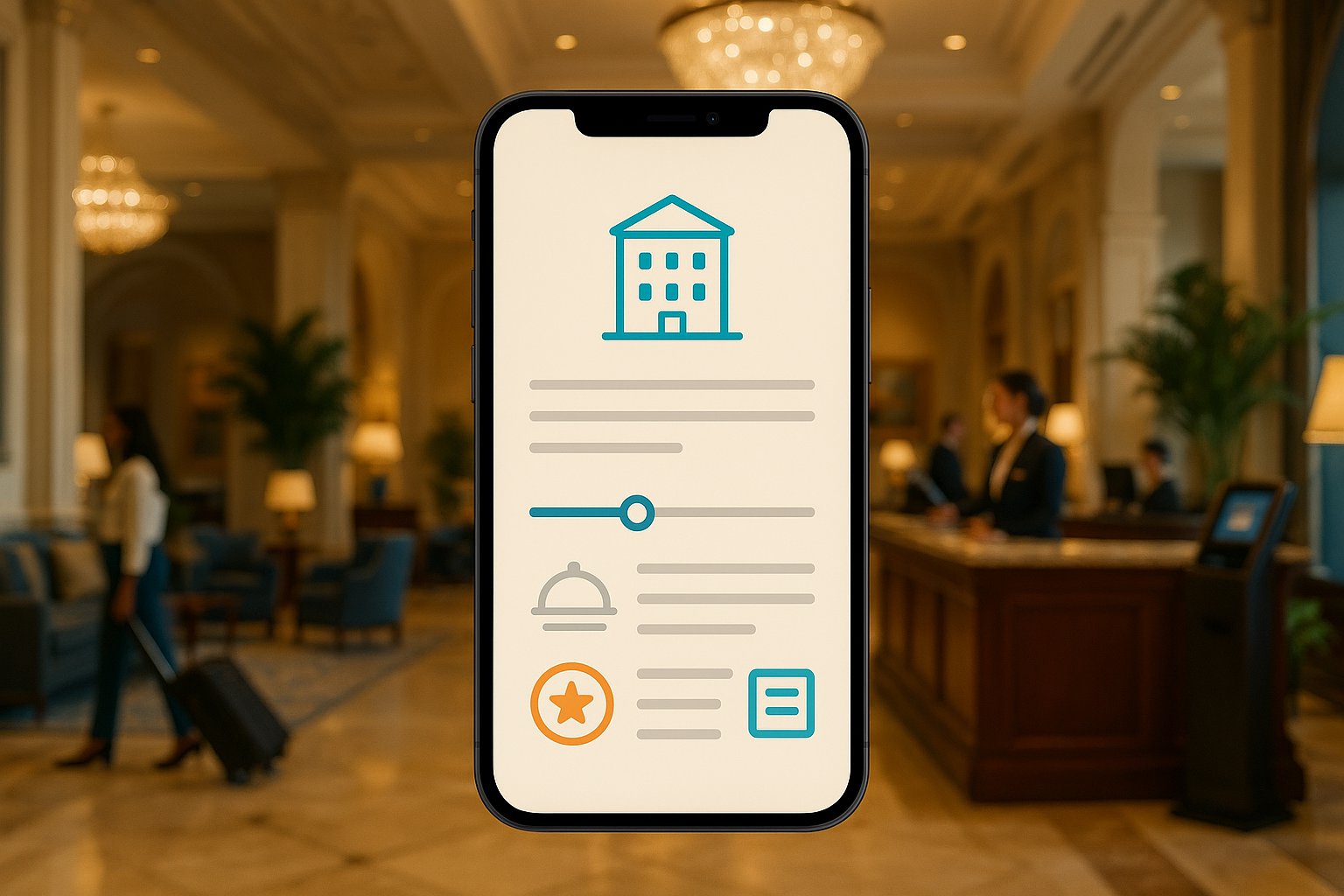Introduction
The on-demand economy has transformed how consumers access services, and the home services sector is no exception. From plumbing and cleaning to landscaping and repairs, customers now expect the ability to book, manage, and pay for services with the same ease as ordering a meal or a ride. This demand has created a massive opportunity for businesses to launch home services applications. However, developing such an app is a journey fraught with complexity. It requires more than just a simple interface; it demands a sophisticated, multi-faceted platform that can seamlessly manage the interactions between customers, service providers, and administrators.
The inherent difficulty lies in building a system that is robust enough to handle intricate scheduling, secure payments, and real-time communication, yet simple enough for each user type to navigate without friction. Many businesses underestimate the logistical and technical hurdles, leading to failed projects, budget overruns, and frustrated users.
This comprehensive guide will illuminate the path to successful home services app development. We will dissect the essential components of a home services app, explore the profound challenges of in-house development, estimate the costs involved, and identify the top development partners who can turn your vision into a market-ready reality. As a top US AI-powered app development firm, we at MetaCTO have over two decades of experience launching complex, scalable mobile applications. We will show you how our expertise can help you navigate this intricate process and build a product that not only functions flawlessly but also drives growth and user loyalty.
What is a Home Services App?
At its core, a home services app is a digital marketplace that connects consumers needing household tasks completed with qualified professionals who can provide those services. It is an on-demand application designed to resolve the three critical levels of interaction inherent in this business model: the customer seeking a service, the service provider offering their expertise, and the administrator overseeing the entire operation.
To effectively manage these distinct roles, a comprehensive home services platform is typically not a single application but an ecosystem of three interconnected components:
- The Customer’s App: This is the user-facing application that customers download to their smartphones. Its primary purpose is to make finding, booking, and paying for services as effortless as possible. A customer should be able to open the app and immediately see a list of available services, each with a brief snippet explaining what to expect. From there, they can delve into a dedicated section for each service, providing exhaustive details on pricing, features, and processes—the A to Z of the service in question. To streamline this discovery process, the app must feature robust search functionality with various filters, allowing users to find providers based on price, distance, and specialization.
- The Service Provider’s App: This application is the mobile toolkit for the professionals on the platform. It is designed to manage their workflow, from receiving job requests to getting paid. For a service provider, the app must offer a simplified registration process to get them onboarded quickly. Once their profile is approved, assignments begin to flow according to their specialty. The app must provide real-time notifications of new inquiries via push notifications, email, and text messages. Crucially, the provider must have the autonomy to review and then accept or reject incoming jobs.
- The Admin Panel: This is the central nervous system of the entire operation. The admin panel is a powerful web-based dashboard that serves as the control center for the business. From here, administrators can monitor and track every activity occurring within the customer and provider apps. This includes managing both user groups, verifying new service provider profiles to prevent fraud, overseeing transactions, managing customer and provider reviews, and generating business analytics. The reports and data on the dashboard must be easy to access, providing crucial insights that help in determining better ways to improve services and keep the business on track.
Together, these three components create a cohesive system that automates scheduling, communication, payment, and quality control, forming the foundation of a modern home services business.
Reasons That it is Difficult to Develop a Home Services App In-House
Embarking on the development of a home services app with an in-house team may seem like a cost-effective and direct approach, but it often becomes a resource-draining endeavor fraught with unforeseen challenges. The complexity of these platforms extends far beyond simple app development; it involves building and orchestrating three distinct applications that must communicate flawlessly in real-time. Here are the primary reasons why in-house development is so difficult.
The Three-Sided Platform Complexity
A home services app is not one application, but three: for the customer, the provider, and the admin. Each requires a unique user interface (UI), user experience (UX), and feature set tailored to its specific audience.
- For Customers: The app needs to be intuitive and engaging. This includes features like a detailed service catalog, advanced filtering (by price, distance, specialization), seamless booking and scheduling for desired time frames, secure multi-option payment gateways (credit card, debit, cash, wallet), and a system for rating and reviewing providers. Each of these features, from the automated generation of invoices to real-time alerts about service status, adds a layer of development complexity.
- For Service Providers: The provider app must be a robust tool for business management. It requires a streamlined registration process, real-time job notifications, the authority to accept or reject work, an integrated chat system to communicate with customers about rate negotiations or task details, and a flexible system for adding payment information (like PayPal or bank accounts). The app must also allow for listing additional charges, such as transportation for distant clients.
- For the Admin: The admin panel is the most functionally dense component. It needs an interactive dashboard for a bird’s-eye view of all platform activity. It’s responsible for managing and contracting both consumers and providers, which includes verifying provider profiles, setting commission structures clearly to avoid uncertainty, and managing transactions securely. Furthermore, it requires tools for content management, promotions and discounts, reviews management (to classify low and top performers), and powerful business analytics to make data-driven decisions.
Developing and maintaining these three distinct but interconnected software products simultaneously requires a large, multi-disciplinary team with expertise in front-end, back-end, database management, and UI/UX design—a resource that most companies do not have in-house.
Logistical and Operational Nightmares
Beyond the software itself, the core business model presents significant operational challenges that the app must solve. An in-house team may lack the domain experience to build solutions for these real-world problems.
- Scheduling and Dispatching: Effectively scheduling and dispatching service providers can be a “logistical nightmare.” The system must account for provider availability, travel time, job duration, and location to create efficient schedules. Doing this poorly leads to delays and profound client dissatisfaction.
- Handling Peak Demand: During peak times, the business can be overwhelmed with service requests. The application’s architecture must be scalable enough to handle these surges without crashing, and its logic must be smart enough to manage queues, set customer expectations, and potentially implement surge pricing or waitlists.
- Ensuring Service Quality: While the app can facilitate connections, the business’s reputation hinges on the quality of the service delivered. Achieving consistent service quality is incredibly challenging when managing a large, distributed team of independent providers. The app must have built-in mechanisms like a robust rating and review system, performance tracking in the admin panel, and clear service guidelines to maintain standards. The admin panel must allow for checking all reviews from both ends and classifying performers accordingly.
The Technical Stack and Infrastructure
Building a home services app requires a solid, scalable, and secure technology stack. Choosing the right stack is a critical decision that significantly impacts development cost, performance, and future scalability. An inexperienced in-house team may make suboptimal choices that lead to technical debt and costly rework down the line.
Key technical challenges include:
- Real-Time Functionality: Features like real-time alerts, in-app messaging, and location tracking for providers are non-negotiable. Implementing these requires expertise in technologies like WebSockets and push notification services.
- Secure Transactions: The platform will handle sensitive user data and financial transactions. This necessitates implementing secure payment gateways, ensuring PCI compliance, and building a system for transaction management that is both fast and secure.
- Encrypted Communication: The in-app messaging feature, which allows consumers and providers to understand each other better, must have its network encrypted to protect user privacy and build trust.
Hiring an experienced development agency like MetaCTO mitigates these risks. With over 120 successful projects launched, we have deep expertise in building complex, multi-sided platforms. Our team understands the nuances of choosing the right technology stack and designing scalable architectures. We handle the entire process—from validating your idea with a Rapid MVP Development to building, launching, and growing your app—ensuring your final product is robust, secure, and ready to compete in a fast-moving market.
Cost Estimate for Developing a Home Services App
Determining a precise, one-size-fits-all cost for a home services app is impossible, as the final price is contingent on a multitude of factors. The complexity of the features, the choice of technology, and the development partner all play a significant role. However, we can break down the key drivers of cost to provide a clearer understanding of the potential investment.
Core Cost Factors
- Feature Complexity and Scope: This is the single largest determinant of cost. A basic app with minimal features will cost significantly less than a full-fledged platform with advanced functionality. Every feature adds to the development hours required for design, coding, and testing.
- Basic Features (Lower Cost): User registration, service listings, simple booking, a single payment option, and a basic review system.
- Advanced Features (Higher Cost): Real-time provider tracking, multi-faceted filtering (price, distance, ratings), in-app encrypted chat, automated invoice generation with comprehensive and short options, multiple payment integrations (wallets, credit/debit), pre-booking and scheduling, push notifications, and a detailed booking history section.
- Number of Platforms: The decision to build for iOS, Android, or both, in addition to the web-based admin panel, directly impacts the budget. Developing native applications for both iOS and Android is typically more expensive than creating a single cross-platform app, though native apps often offer superior performance and a better user experience. The admin panel, while web-based, is a substantial project in its own right.
- Technology Stack: The choice of programming languages, frameworks, databases, and servers is a significant decision that “adds to the overall cost of development.” A robust, scalable, and secure stack may require more specialized (and thus more expensive) development talent. Investing in a solid technology stack from the outset, however, prevents costly rewrites and performance issues as the user base grows.
- UI/UX Design: A home services app must be intuitive for three different user groups. Crafting a seamless and engaging experience for customers, an efficient workflow for providers, and a powerful dashboard for admins requires extensive work from UI/UX designers. This includes wireframing, prototyping, and creating a full design system, which is a critical investment in user satisfaction and retention.
- Development Team: The location, size, and experience of your development team will heavily influence the cost. Hiring a top-tier agency in the US, like MetaCTO, may represent a higher upfront investment than offshoring, but it provides unparalleled expertise, communication, and a track record of launching successful products.
A Phased Approach to Managing Costs
For startups and businesses looking to manage their initial investment, a phased development approach is highly effective. Rather than building every conceivable feature at once, we recommend launching with a Minimum Viable Product (MVP). An MVP includes only the essential features needed to solve the core problem for early adopters.
Our 90-day MVP service is designed for this exact purpose. We help you go from idea to a market-ready app quickly, allowing you to test your concept, gather real user feedback, and secure investor funding—all on a tight budget and timeline. This approach de-risks the development process and ensures that you invest in building features that users actually want and need.
Top Home Services App Development Companies
Choosing the right development partner is arguably the most critical decision you will make. You need a team with the technical prowess, industry experience, and strategic vision to build a product that can succeed. Here are the top companies in the space.
1. MetaCTO
As a premier AI-powered mobile app development agency based in the United States, we at MetaCTO specialize in turning ambitious ideas into market-leading applications. With two decades of experience and over 120 successful projects, we provide end-to-end services that cover every stage of the app lifecycle, from concept to launch and beyond.
What sets us apart is our deep technical expertise and strategic approach. We understand that integrating the complex components of a home services app—real-time communication, multi-role permissions, secure payment processing, and advanced analytics—into a single, cohesive mobile experience is a significant challenge. It requires a flawless architecture to prevent data conflicts, performance lags, and security vulnerabilities. Our seasoned developers excel at this, ensuring your app is not only feature-rich but also stable, scalable, and secure.
Our process is designed to de-risk your investment and accelerate your time to market:
- Validate: We can help you launch a streamlined MVP in 90 days, allowing you to test the waters and collect real feedback on a tight budget.
- Build: We handle the entire development process—from product strategy and design to building and launching—delivering a polished app that provides a smooth user experience from day one. Our expertise in AI Development allows us to integrate intelligent features like smart scheduling, price optimization, and personalized recommendations.
- Grow & Monetize: Post-launch, we use A/B testing and analytics to optimize user onboarding, engagement, and retention. We also help you implement the most effective app monetization strategies, from subscriptions to commission-based models, to turn your app into a profitable enterprise.
Brands like G-Sight and Mamazen trust us to build and scale their mobile platforms. We don’t just write code; we act as deep technical partners, building the technology and AI roadmap that will increase your profit and valuation.
2. Enatega
Enatega is a notable company that helps create home services apps in the USA. They have a team of professionals dedicated to delivering high-quality work tailored to your specific requirements. Enatega’s expertise ensures that your on-demand home services app will be well-crafted and aligned with your business needs, positioning them as a strong choice for creating one of the best apps for home services.
Conclusion
Developing a home services application is a formidable but rewarding endeavor. As we’ve explored, success requires a deep understanding of the three distinct user ecosystems—the customer, the service provider, and the admin—and the creation of a sophisticated technological platform to serve each one flawlessly. The challenges are significant, from navigating the logistical complexities of scheduling and quality control to building a secure, scalable, and feature-rich technical foundation. Attempting this in-house can quickly overwhelm even capable teams, leading to delays and compromised quality.
This guide has outlined the essential features, from intuitive service discovery and booking for customers to robust job management for providers and comprehensive oversight for administrators. We’ve seen that the cost is not a fixed number but a variable dependent on the depth of these features, the chosen technology, and the development team’s expertise.
Ultimately, the most critical factor in your project’s success is the partner you choose to build it. A top-tier development agency does more than just translate your ideas into code; they bring strategic insight, technical excellence, and a proven process to the table. At MetaCTO, we have spent 20 years building, growing, and monetizing complex mobile applications. We transform big ideas into apps that are better than you could have imagined, guiding you every step of the way.
If you are ready to build a successful home services app the right way, from day one, let’s talk.
Talk with a MetaCTO expert today to integrate a powerful, scalable home services platform into your business.






